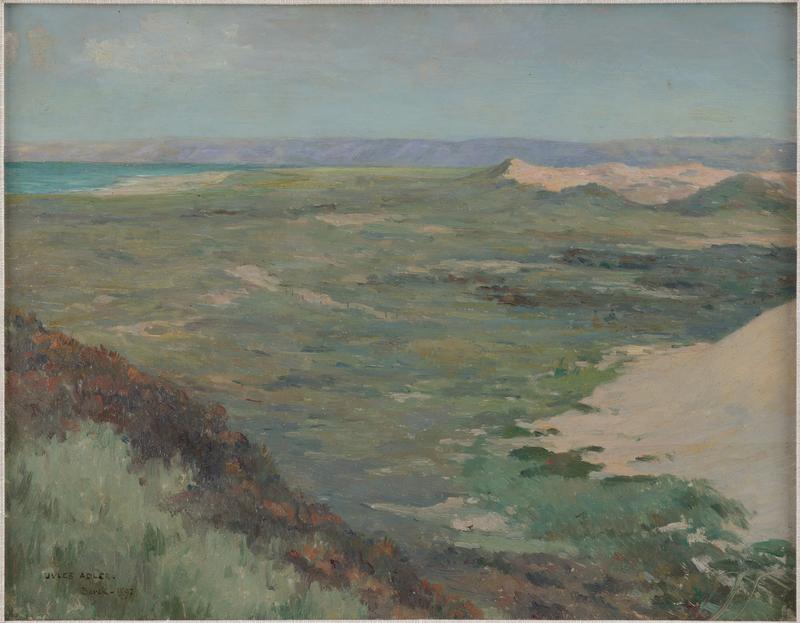
1. Jules Adler, Berck-sur-Plage, Pas-de-Calais
| Artist | Jules Adler, French, Luxeuil-les-Bains 1865–Nogent-sur-Marne 1952 |
| Title, Date | Berck-sur-Plage, Pas-de-Calais, 1897 |
| Medium | Oil on panel |
| Dimensions | 11 1/2 × 14 1/2 in. (29.2 × 36.8 cm) |
| Inscriptions + Marks | Lower left: JULES ADLER. / Berck–1897 |
| Provenance | [Neal Fiertag, Paris, until 1987; to Weisberg]; Yvonne and Gabriel Weisberg, Minneapolis |
| Exhibition History | "Reflections on Reality: Drawings and Paintings from the Weisberg Collection," Mia, 2022–23 |
| Credit Line | Promised gift of Gabriel P. and Yvonne M.L. Weisberg, Minneapolis |
This landscape is far different from the dockworkers, miners, and urban poor we are used to seeing from Jules Adler. An important naturalist painter at the turn of the twentieth century, he is best known for large-scale compositions capturing the life of city dwellers. Such paintings were often part of official commissions or purchases by the French state.1 Seemingly fewer in number are his rural landscapes—typically small and intimate—such as this view made near the French town of Berck-sur-Plage (now Berck-sur-Mer) in the northern département, or county, of Pas-de-Calais.
After the railroads connected this area to Paris, transit time was reduced to about three hours. Artists began to visit, among them Édouard Manet and Albert Besnard (cat. nos. 22–23).2 These artists often depicted figural scenes, whereas Adler found inspiration in the wide, sweeping dunes that led to the sea—more specifically, the English Channel. In this wood panel, he worked directly from the motif to capture the untamed qualities of shifting sands and windblown grasses. Though seemingly untouched here, the area was the locus of repeated battles between the English and the French centuries ago. In Adler’s time, a burgeoning tourist trade was developing around the Berck countryside. Yet this landscape contains no hint of the luxury hotels, casinos, theaters, concert halls, spas, and villas that sprang up, catering to those seeking the restorative benefits of seaside recreation. Today the open space that Adler pictured is much valued, and parts of the dunes have been set aside as a bird sanctuary.
GPW
Notes
For a recent examination of the artist’s life and career, see Vincent Chambarlhac et al., Jules Adler 1865–1952: Peindre sous la Troisième République (exh. cat.) (Milan: Silvana Editoriale, 2017). ↩︎
Gabriel P. Weisberg, “Albert Besnard at Berck-sur-Mer: Decorative Art Nouveau Painting in Public Buildings,” Apollo, vol. 151, no. 459 (May 2000), pp. 52–58. ↩︎